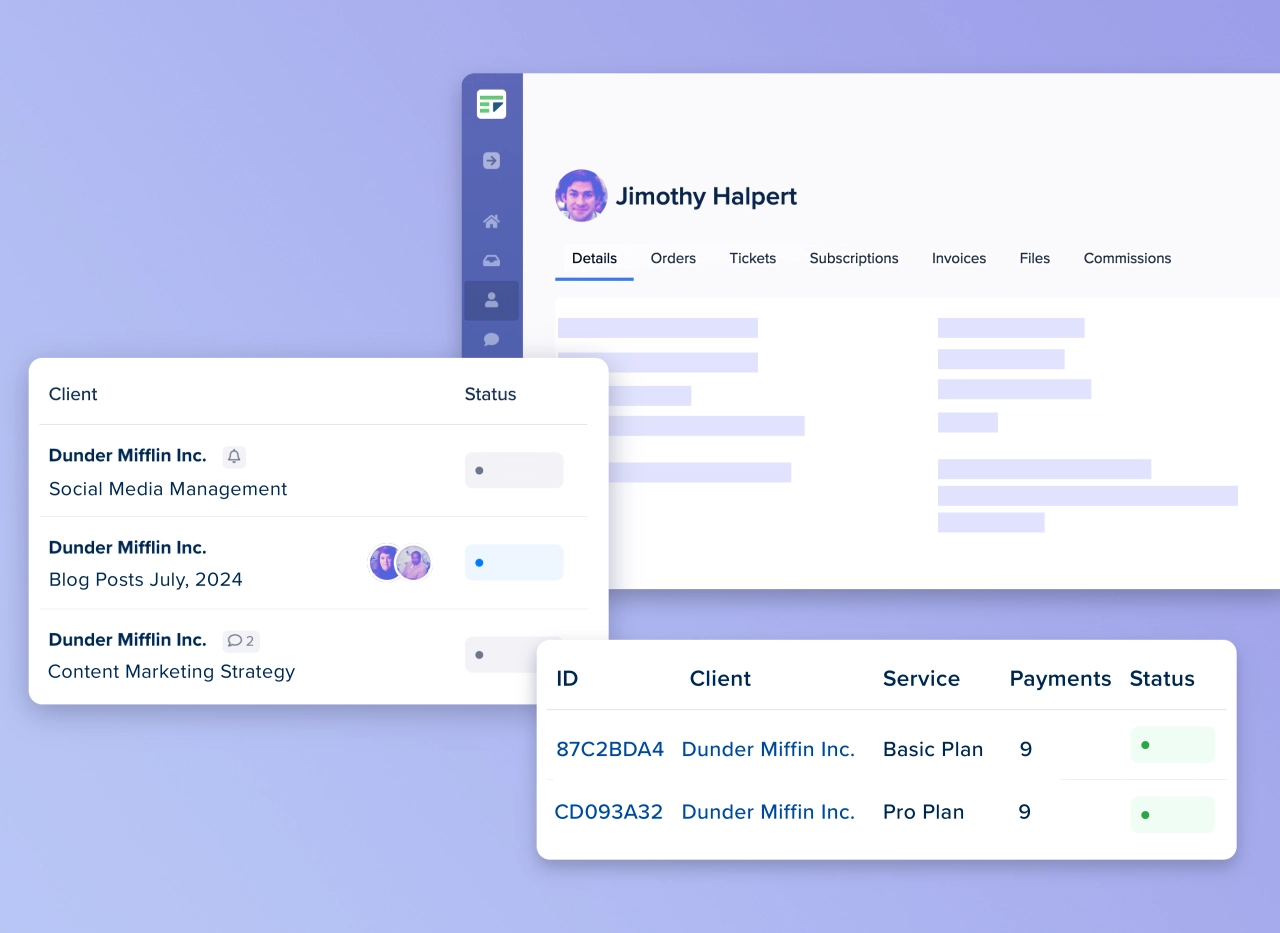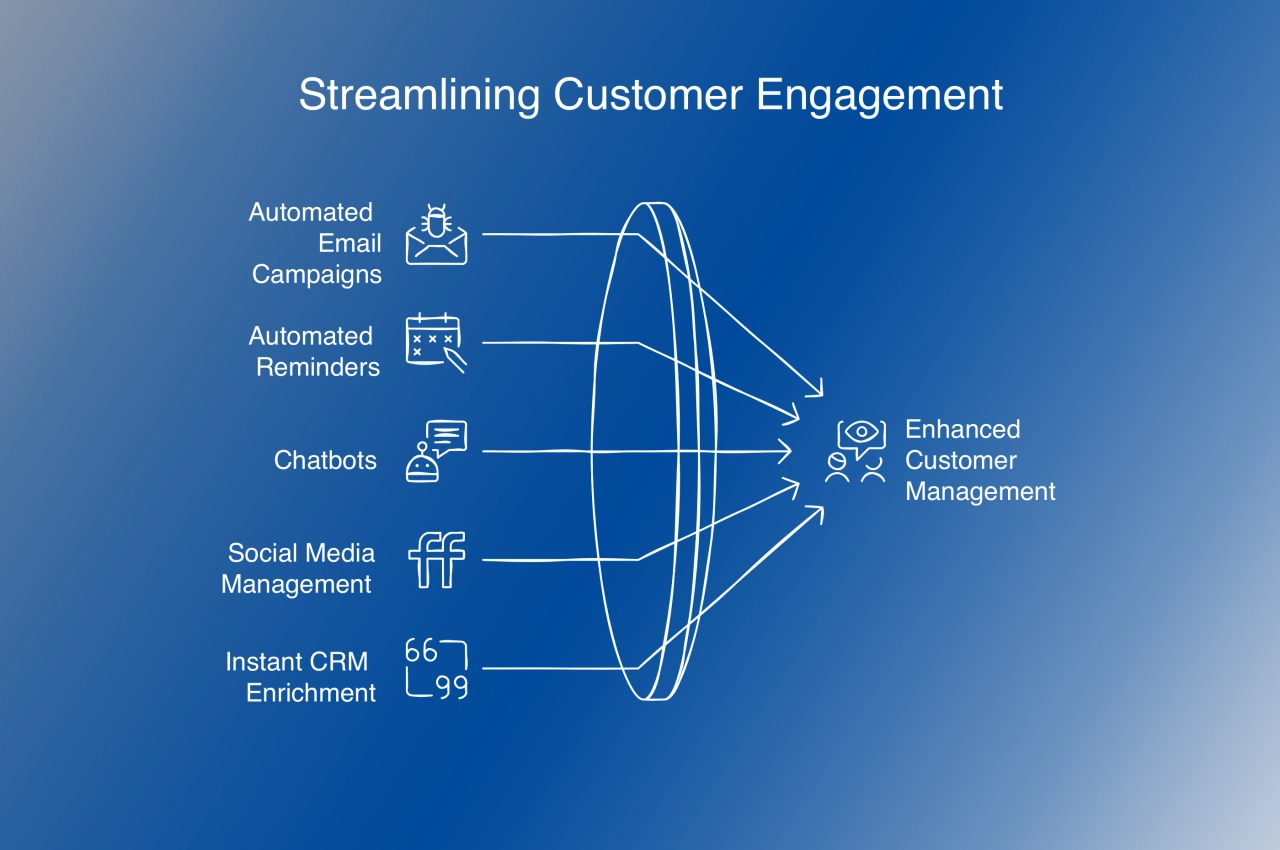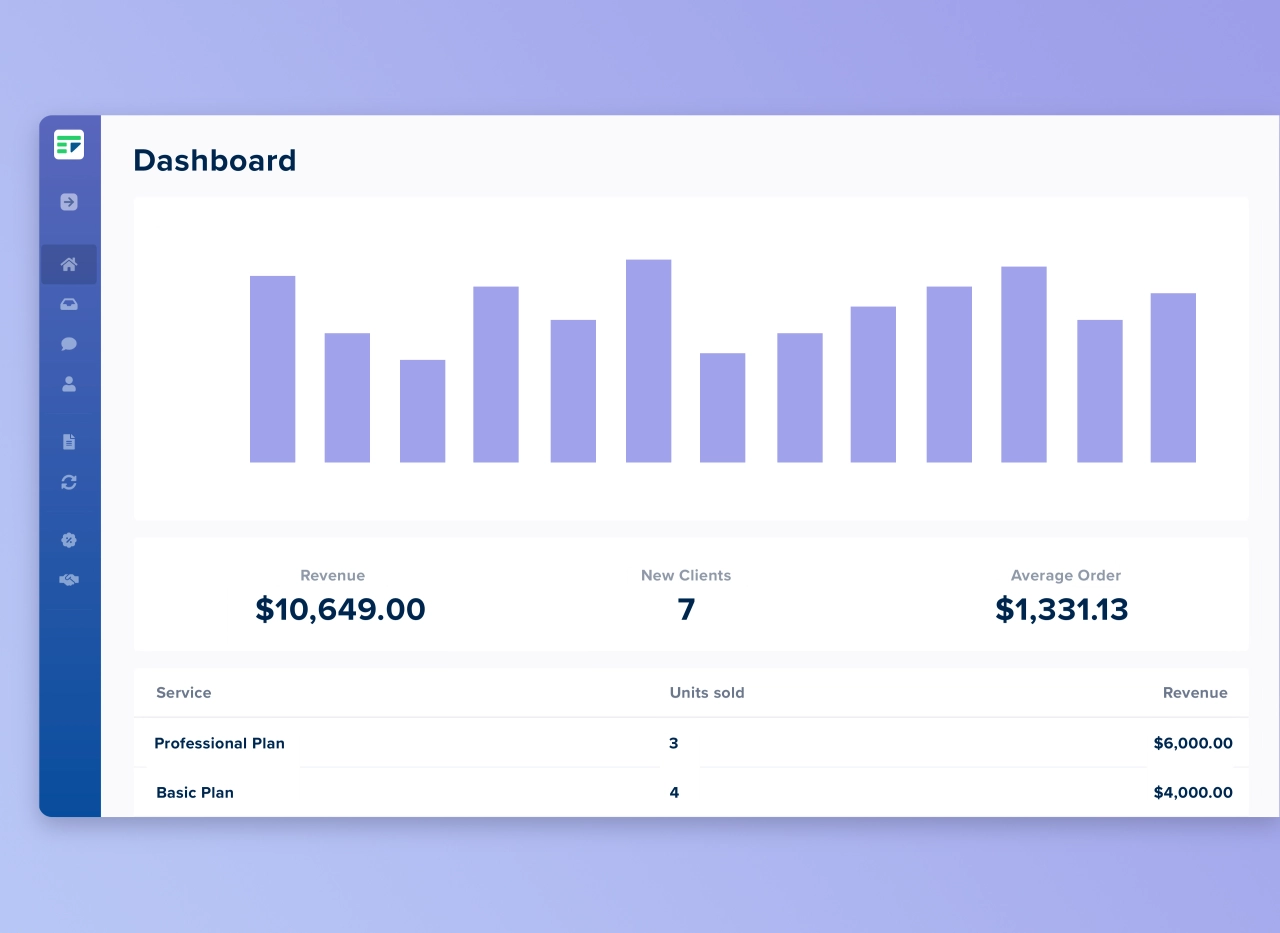- Building a customer success team with skillful individuals is essential for improving customer retention and driving revenue growth.
- Clear documentation of customer interactions and histories is vital for effective customer management and strategic decision-making.
- Automating tasks and communications with CRM software can streamline customer management processes and enhance service quality.
Successfully managing clients is the core of your agency’s growth and health. According to 32 Customer experience statistics you need to know for 2024 from SuperOffice, 45.9% of surveyed businesses wanted to invest more in customer experiences. And it makes all the sense in the world: according to the same research, companies with superior customer experiences drive more revenue.
The reason behind this is easy to see: three-quarters of people would spend more with companies that offer great customer experience, as Zendesk’s CX Trends 2024 shows. Plus, not only are they happy to spend more, they’re also happy to come back and recommend you to their peers.
Naturally, you want all those benefits for your agency too. And in this article, I’ll uncover the best ways to manage relationships with customers.
What is customer management?
Customer management refers to the process, strategy, and tactics used in acquiring, managing and retaining customers for a business or organization. It involves understanding the needs and preferences of customers, building relationships with them, and providing products or services that.
Customer management essentially boils down to ensuring each customer is fully satisfied with your company’s products and services. From the moment they become interested in your brand to their post-purchase experience, every step along the way is important in building a strong and loyal customer base.
Let’s look at seven key steps involved in effective customer management.
Build a customer success team
One of your first tasks should be to build a customer success team. This requires identifying individuals who have excellent problem-solving skills, and are great at helping customers succeed with their business. Ensure to select people you’re sure will be able to improve your customer retention, loyalty, and fuel the growth of your revenue.

Some of the responsibilities of the customer success team will be to onboard customers, make suggestions to improve the user experience, and identify recurring issues (with your services).
They can conduct training sessions, build a help center, and identify looming issues before the customer becomes aware of them.
Define responsibilities
If you want to build a successful customer management program, start by making sure all responsibilities are clearly defined. This includes determining which employees are responsible for customer acquisition, customer retention, and overall satisfaction. It also involves setting and managing expectations and goals for each employee in order to effectively manage and track their progress.
Keep in mind that customer management responsibilities might sometimes be split among different departments, such as marketing, sales, and customer service. It’s important to make sure all departments are working together, which is especially important once you have to manage multiple customers.
Set up documentation
Effective customer management relies heavily on comprehensive documentation. It serves as the backbone for traceability, allowing businesses to track every interaction with their customers and understand the evolution of those relationships over time.

It also plays a crucial role in facilitating growth, as analyzing these interactions can reveal patterns and insights that drive strategic decision-making and identify areas for improvement or expansion. Proper documentation ensures that customer information is organized, accessible, and secure, thereby enhancing the overall customer experience and building stronger relationships.
Important documents for effective customer management include:
Customer profiles: Detailed records of each customer’s personal information, purchase history, preferences, and feedback.
Customer feedback and surveys: Records of customer feedback, survey responses, and suggestions for improvement.
Support tickets: Logs of all customer support interactions, including the issue reported, steps taken to resolve it, and the final outcome.
Sales and purchase history: Comprehensive records of all transactions with customers, including date, product or service purchased, and payment details.
Customer communication logs: A record of all communications with customers, including emails, phone calls, and social media interactions, to ensure continuity in customer relationships and service.
By using client portal software such as SPP, every detail of your customer interactions are saved inside the same tool: messages, files, logs.
Train team members & collaborators
Everyone working in and with your company (team members and external collaborators) should be on the same page when it comes to customer management. By training everyone according to the same standards and guidelines, you can ensure a consistent level of customer service.
Cover the following topics in your training:
communication skills
handling difficult situations
understanding customer needs

Make sure to update team members if company policies regarding customer management change.
Use software
Good customer relationship management software (CRM) helps you keep track of all your customers, their interactions, and at what stage they are in the pipeline.
For instance, SPP allows you to:
Create CRM fields that hold specific information about a customer, for instance their preferred way to address them, favorite product, etc. Use the custom fields to create targeted marketing campaigns or to assign customer relations tasks to specific team members.
Additionally, SPP enables you to add custom statuses to each customer. You can segment them into different groups, making it easier to keep an eye on those likely to churn, or those who might be interested in upsells.
SPP also allows you to see the customer’s log history, including timestamps and all related data points. This kind of information helps you provide top-quality service and allows you to personalize your interaction with your customers.
Finally, SPP also allows you to block free domain email addresses (like Gmail, for example) from signing up. This ensures that you only get B2B customers you’re actually interested in.

Keep all your client data securely stored in one place.
Automate tasks & communication
Customer management automation can help you streamline processes and save time that can then be allocated to more important tasks. By integrating customer lifecycle marketing strategies into your automation efforts, you can ensure that every touchpoint with your customers is optimized for engagement and retention.
Here are a few ways automation can enhance customer management:
Automated email campaigns: With customer management software, you can create automated email campaigns to target specific segments of your customer base with personalized messages. This helps nurture relationships and keep customers engaged. Popular marketing automations include sending onboarding campaigns, offers, or anniversary messages.
Automated reminders: Set up automated reminders for important events such as contract renewals, follow-up calls, or customer birthdays. This ensures that no important dates slip through the cracks and allows you to stay on top of your customer relationships.
Chatbots: Used right, chatbots such as the one Intercom offers can help you provide efficient, 24/7 support to your customers. They can assist with basic inquiries and redirect more complex ones to a human representative, taking the load off your team and freeing up their time for other tasks.
Social media management: Social media is an important communication channel for customers. With automation tools, you can schedule posts, respond to messages and mentions, and even track and analyze customer sentiment on multiple platforms, all from one centralized location. This helps you stay active and engaged with your audience while also saving time.
Instant CRM enrichment: Contact and account information in your CRM frequently changes, for example when people get promoted or leave companies. Updating and enriching records in your CRM helps manage customers better.
You should make sure your CRM software supports your automation. For instance, SPP comes with an in-built auto-responder to help you keep your clients in the loop with their questions and requests.

SPP also works with Zapier, which you can use to automate messages with any of the tools Zapier integrates with.
Measure & analyze
To improve your customer management strategies and better understand your customers, it’s important to measure and analyze data related to customer interactions.
This includes tracking metrics such as:
Customer satisfaction: Measuring how satisfied customers are with the service they receive can help you identify areas for improvement and ensure that you’re consistently meeting their needs. Track your customer loyalty and measure their sentiment with surveys. It’s important that customers form an emotional connection with you for increased brand loyalty.
Response time: How quickly your team responds to customer inquiries or issues can have a major impact on satisfaction levels. By tracking response time, you can identify any bottlenecks in your processes and work towards improving efficiency.
Customer retention: Keeping track of how many customers stay with your company over time can give you an idea of the overall health and strength of your relationships. Try to understand customer needs in order to increases your retention rate.
Customer lifetime value: This metric calculates the total revenue a customer generates for your business over their lifetime. By understanding the value of each customer, you can prioritize and invest in those relationships accordingly.

Get an overview of all your metrics with our powerful reporting.
These are just some of the more basic metrics you can measure to assess if your customer management methods are working. They will help you stay on track and make data-driven decisions to improve your strategies.
Customer management, your business’ engine
Your business wouldn’t exist without its customers—which is precisely why customer management is such a key part of your operations. Using the right tools and techniques can help you attract better customers for your agency, keep better track of your customers’ interactions, offer them excellent service, and retain them for longer periods.
Ultimately, mastering customer management is not just an operational necessity—it’s your ticket to creating loyal advocates and fueling the long-term success of your business.













